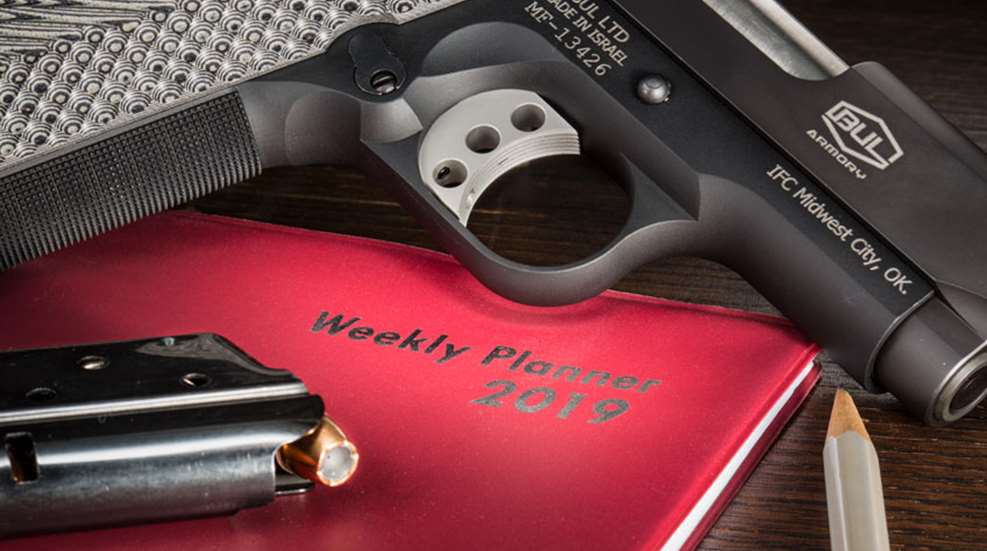
The vast majority of gun owners are also responsible citizens. That means most of you work for a living. You care for families. You care for your home. And, you take an active part in some phase of your community. Your time is one of the most-valuable things that you have, therefore it is important you budget it wisely. It is not only important to budget time for your defensive-shooting practice, but it is critical the practice in which you engage is the kind of practice that meets your needs.
So, I suggest that while spending time advancing on multiple targets with your AR while dressed in full tactical kit might be fun, think about how well it relates to what you may face in your daily life. Assaulting barricaded antagonists and clearing buildings are events that will probably not factor in to the threats that you may have to deal with in the real world.
It is far more likely that the defensive shooter will have to face armed robbery on the streets or in a place of business. He or she may have to deal with a carjacking or a road-rage incident. He or she certainly might have to defend themselves and their families against a home invasion. These realistic threats are what we should be practicing to deal with when our practice time is limited.
For this reason, I suggest to you that a good deal of your time should be spent in perfecting a speedy pistol presentation and first-shot hit. In my experience, the vast majority of crooks are actually cowards. Even though crooks tend to run in groups, a quick draw and a fight-stopping hit on an attacker may mean that this is the only shot that you will have to fire because his pals are going to be beating feet to get away.
Once a person has reached a decent level of proficiency in this rather simple drill, it is best to incorporate movement to one side or the other and the use of cover. Movement and cover greatly increase one’s chances of surviving a criminal attack.
A person should also think about the amount of time most of us spend sitting, either in chairs or in our vehicle. Yet, we rarely incorporate the pistol presentation from a seated position into our practice. If you have to stand in order to draw your handgun, you are wasting time—time that is better spent delivering a fight-stopping shot.
When we start working from a seated position, we often find that the way we have chosen to carry our handgun may not be the best location for a quick draw. We also quickly realize that we have to take great care to not cover ourselves with the gun muzzle during the drawstroke. An unintentional shot to the groin or upper thighs may well impact the femoral artery, in which case we can be in big trouble quite rapidly—like succumbing to blood loss within a matter of seconds.
A lot of gun ranges don’t allow a person to practice defensive shooting from the holster or with a lot of movement. In which case, a person is advised to practice his shooting skills at the range and his presentation and other defensive skills at home during dry practice. Needless to say, the defensive shooter should go to great lengths to make sure he is doing his dry practice with an unloaded gun—I know, but check it again, will you?
Recently, on social media, we have been having a discussion about the need to practice drawing to the low-ready position instead of always going on target and firing your shot. In reality, firing a shot may not always be needed when we draw in an actual situation. In nearly 30 years as a Texas peace officer, I drew my handgun on countless occasions, but only had to actually fire it just a few times. The same is true for the armed citizen. You will actually have to fire only in a small percentage of the times that you draw your gun against a threat. Remember, crooks are cowards and most of them haven’t planned on armed resistance.
So, each of us needs to evaluate the amount of time that we can spend on defensive practice. And, we also need to give some serious thought to the type of practice we have time for. Practicing the pistol presentation and that all-important first-shot hit, from both standing and while seated, is critical. Once we are doing that smoothly and proficiently, we can incorporate some movement and use of cover. And it is also a good idea to practice drawing to the ready position so that we have the opportunity to evaluate the situation and determine if a shot actually needs to be fired.
In a life-threatening situation, folks rarely rise to the challenge and perform better than they usually do on the shooting range. In the real world, we generally function at a level significantly lower than what we’ve been able to do on the range. That’s what life-threatening stress will do to you.
It drives home why defensive practice is so important. Few of us have time to waste anymore. That’s why it is so wise to budget your time and to practice those things that really apply to your situation. Budget wisely and practice wisely; that’s the key to defensive success.


































